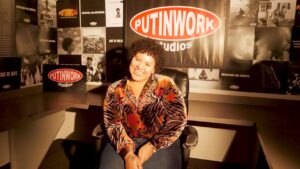What Is an ETF?
An exchange-traded fund (ETF) is a type of investment fund that holds a collection of assets, such as stocks or bonds. Buying a share of an ETF gives investors access to many securities at once. ETFs are traded on stock exchanges throughout the day and are typically lower in cost compared to mutual funds. They offer a way to build a diversified portfolio with fewer trades and less complexity.
How ETFs Work
ETF providers purchase the underlying assets and create a fund designed to mirror the performance of those assets. Shares of the fund are then offered to investors. While ETF shareholders don’t directly own the assets, they may still receive dividends. ETFs aim to follow the price movements of an index or commodity but trade at real-time market prices, which can differ slightly from the value of the underlying holdings. Unlike mutual funds, which trade once daily after market close, ETFs can be bought and sold at any time during trading hours.
Types of ETFs
ETFs come in several varieties depending on the assets they include:
- Sector ETFs invest in specific segments of the economy, like health care or technology. These may be useful for targeting areas of growth or contraction depending on economic conditions.
- Commodity ETFs focus on raw materials like gold, oil, or agricultural goods. Some hold physical commodities, while others invest in futures contracts or companies involved in the industry.
- Stock ETFs hold shares of publicly traded companies, offering broader exposure than individual stocks. They are often used for long-term investment strategies.
- Bond ETFs contain fixed-income securities and pay out income from bond interest. They don’t mature like individual bonds, but they can be used to generate steady cash flow.
- International ETFs provide access to foreign markets, including specific countries or global regions, helping investors expand their reach beyond domestic investments.
- Cryptocurrency ETFs are relatively new and include funds that directly track digital currencies like Bitcoin or hold crypto-related assets.
- Leveraged ETFs aim to amplify the returns of an index by using financial tools. These funds also increase exposure to potential losses, so they require careful consideration.
- Exchange-Traded Notes (ETNs), while similar in trading style, are structured differently and function as debt instruments rather than pooled investment funds.
Benefits of ETFs
ETFs are popular for several reasons:
- Diversification: A single ETF can provide access to a broad range of assets, industries, or markets, reducing the impact of poor performance from any single investment.
- Transparency: ETFs disclose their holdings daily, allowing investors to know exactly what they own.
- Tax Efficiency: ETFs generally produce fewer taxable events than mutual funds, since they trade less frequently and capital gains are typically realized only when the investor sells their shares.
- Low Costs: Many ETFs have low expense ratios and are available through commission-free brokers, making them cost-effective.
Drawbacks of ETFs
Despite their advantages, ETFs also have limitations:
- Trading Fees: Some brokers may still charge commissions, though this has become less common.
- Liquidity Issues: ETFs that are less frequently traded can have wider bid-ask spreads, making it harder to sell shares at desired prices.
- Risk of Closure: If an ETF doesn’t attract enough investment, the provider may shut it down. Investors are then required to sell, possibly at a loss or with unexpected tax consequences.
Choosing the Right ETF
When selecting an ETF, it’s important to examine the fund’s expense ratio, trading volume, asset composition, and how it aligns with your broader investment goals. Some ETFs follow well-known indexes, while others may track narrow sectors or themes. Lower costs don’t always mean better value, so careful evaluation is essential.
ETFs Compared to Mutual Funds and Stocks
| Feature | ETFs | Mutual Funds | Individual Stocks |
| Fees | Average ~0.15% expense ratio | Average ~0.42% plus other fees | Commissions may apply |
| Trading Access | Throughout the trading day | Only after market close | Throughout the trading day |
| Diversification | Broad (basket of assets) | Moderate to high (varies) | Low (single company exposure) |
ETFs offer a flexible and cost-conscious way to invest in a variety of asset classes. With options ranging from stocks and bonds to commodities and international markets, they provide an efficient tool for portfolio diversification. However, it’s important to understand their structure, costs, and risks before investing. Careful research and alignment with personal goals can help investors use ETFs effectively.














